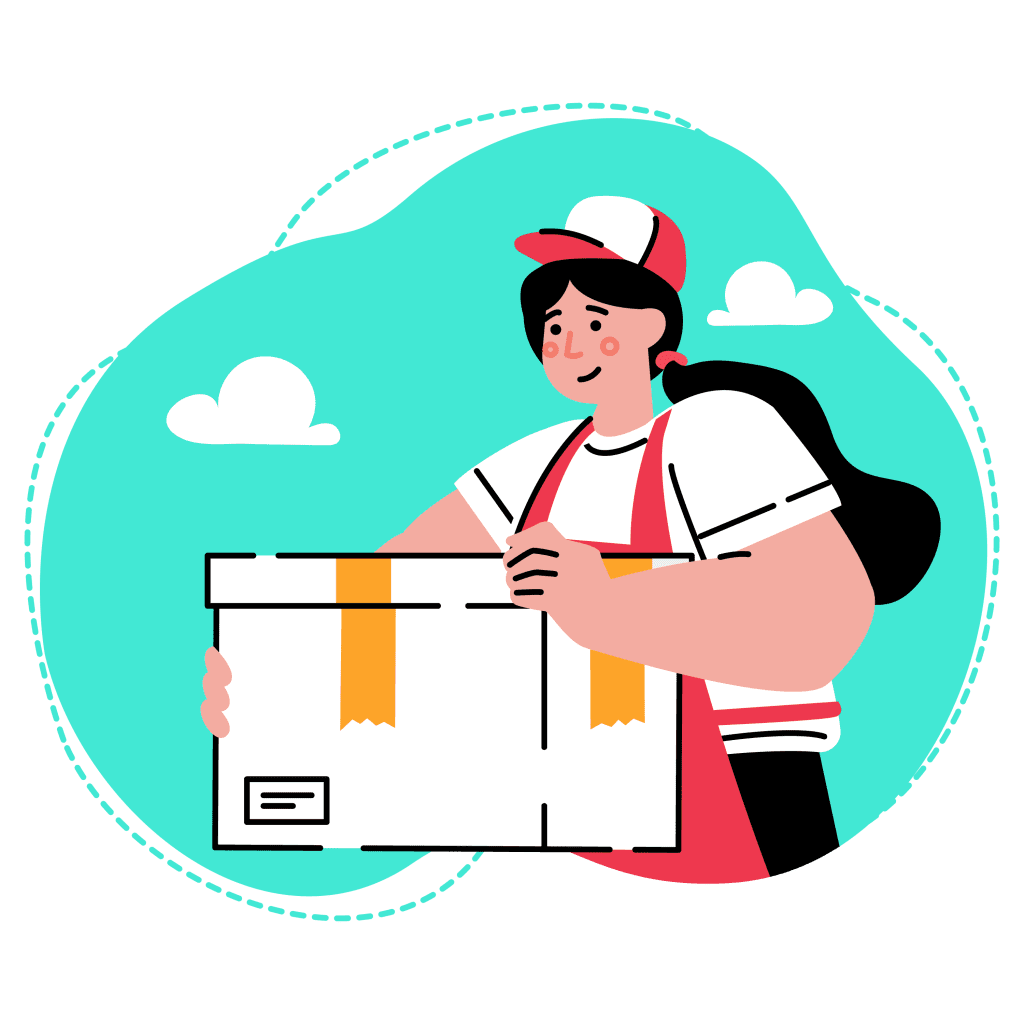Canada’s delivery industry plays a pivotal role in facilitating the movement of goods across the vast expanse of the country. With its diverse landscapes, ranging from sprawling urban centers to remote rural areas, the delivery services across Canada face a unique set of challenges and opportunities. The industry is characterized by a dynamic blend of traditional courier services and innovative, technology-driven solutions that cater to the evolving needs of businesses and consumers.
In recent years, the surge in e-commerce activities has significantly impacted the delivery landscape, prompting companies to adapt and streamline their services. From the bustling city streets of Toronto to the tranquil rural communities of the Maritimes, the Canadian delivery ecosystem navigates through various complexities to ensure timely and efficient transportation of packages.
Importance of Understanding the Unique Challenges in Rural and Urban Areas
As we delve into the intricacies of delivery services across Canada, it becomes imperative to recognize the stark differences between urban and rural environments. The challenges faced in bustling urban centers are vastly distinct from those encountered in remote rural regions. Understanding these differences is crucial for delivery companies seeking to optimize their operations, enhance customer satisfaction, and contribute to the overall efficiency of the supply chain.
Urban areas present challenges such as traffic congestion, limited parking spaces, and high population density, necessitating innovative solutions to ensure seamless deliveries. On the other hand, rural areas pose challenges related to vast distances, sparse populations, and often challenging terrain, requiring a tailored approach to address the unique needs of these communities.
This exploration aims to shed light on how delivery services in Canada navigate these challenges, offering insights into the strategies and innovations that have emerged to meet the demands of both urban and rural customers. By understanding the intricacies of each setting, delivery companies can tailor their approaches, contributing to a more resilient and adaptable Canadian delivery industry.
Challenges in Urban Deliveries
Urban centers across Canada grapple with the pervasive issue of traffic congestion, a formidable challenge for delivery services. The dense network of roads often becomes clogged during peak hours, leading to delays in delivery times. Navigating through congested streets not only hampers the efficiency of delivery routes but also poses a considerable challenge in meeting promised delivery windows.
To mitigate these challenges, delivery companies are increasingly turning to advanced route optimization technologies and real-time traffic monitoring systems. These tools enable them to adapt dynamically to changing traffic conditions, ensuring that drivers can navigate congested areas more efficiently and maintain reliable delivery schedules.
Limited Parking and Accessibility Issues
Another significant challenge in urban deliveries revolves around the scarcity of parking spaces and accessibility issues. Delivery vehicles often struggle to find suitable places to park, leading to delays and disruptions in the delivery process. This challenge is particularly pronounced in densely populated urban areas where parking is at a premium.
Addressing this issue requires a combination of strategic planning and innovative solutions. Some companies are exploring partnerships with local businesses to establish dedicated delivery zones or utilizing mobile applications to help drivers identify available parking spaces more efficiently. By proactively addressing limited parking and accessibility, delivery services aim to enhance the overall customer experience in urban settings.
High Population Density: Managing Bulk Deliveries Efficiently
The high population density in urban areas poses a unique challenge for delivery companies, especially when dealing with bulk deliveries. Delivering packages to numerous addresses within a condensed geographic space demands careful coordination and strategic planning.
To address this challenge, some companies are investing in state-of-the-art warehouse management systems and smart logistics solutions. These technologies help optimize inventory handling, packing, and loading processes, ensuring that bulk deliveries are managed efficiently and reach their destinations in a timely manner.
Addressing Security Concerns in Densely Populated Areas
Security concerns become more pronounced in densely populated urban areas, where the risk of theft or damage to packages is heightened. Deliveries to residential complexes, apartment buildings, or busy commercial areas require additional measures to safeguard packages and ensure the integrity of the delivery process.
Delivery companies are implementing measures such as secure lockboxes, surveillance systems, and contactless delivery options to address these security concerns. Building trust with customers through transparent communication and real-time tracking updates also contributes to mitigating security issues in densely populated urban environments.
In navigating these challenges, urban delivery services in Canada are continuously evolving, leveraging technology and innovative strategies to ensure the efficient and secure transportation of packages in bustling cityscapes.
Solutions and Innovations for Urban Deliveries
To combat the challenges posed by urban traffic congestion, delivery companies in Canada are increasingly turning to technology-driven solutions. Real-time traffic monitoring tools and route optimization software play a pivotal role in enhancing the efficiency of urban deliveries. By leveraging data on current traffic conditions, these technologies allow delivery providers to dynamically adjust routes, minimizing delays and optimizing delivery schedules. The result is a more agile and responsive delivery system that can navigate the complexities of urban traffic with greater precision.
Implementing Alternative Delivery Methods like Bike Couriers or Electric Vehicles
In response to environmental concerns and urban congestion, some delivery companies in Canada are adopting alternative and eco-friendly modes of transportation. Bike couriers and electric vehicles (EVs) have gained popularity in urban delivery services. These modes not only contribute to reducing carbon emissions but also offer greater maneuverability in busy city streets. Electric vehicles, in particular, are becoming increasingly viable, with advancements in battery technology enabling longer ranges and quicker charging times. These sustainable alternatives align with the growing emphasis on eco-conscious practices within the delivery industry.
Exploring the Role of Smart Lockers and Centralized Delivery Hubs
Smart lockers and centralized delivery hubs are innovative solutions aimed at addressing the challenges of limited parking and accessibility in urban areas. Smart lockers provide secure, contactless parcel delivery options, allowing customers to retrieve their packages at their convenience. Centralized delivery hubs serve as consolidation points, streamlining the distribution process. By strategically placing these hubs in accessible locations, delivery companies can optimize routes and reduce the reliance on individual doorstep deliveries. These solutions contribute to more efficient urban delivery networks while enhancing the overall customer experience.
Customer Communication Strategies for Urban Areas
Effective communication with customers is essential in urban delivery services. To manage expectations and ensure a smooth delivery experience, companies employ robust customer communication strategies. Real-time tracking updates, delivery notifications, and personalized alerts play a crucial role in keeping customers informed about the status of their deliveries. Additionally, interactive customer support channels and user-friendly mobile applications empower customers to make informed decisions regarding their deliveries. Clear communication helps build trust, minimizes uncertainties, and enhances overall satisfaction in the dynamic urban delivery landscape.

Challenges in Rural Deliveries
Rural areas in Canada present unique challenges for delivery services, primarily characterized by vast distances and a sparse population. Navigating these extensive distances while ensuring cost-effectiveness is a constant challenge for delivery companies. The need to reach scattered addresses in remote regions can result in increased fuel and operational costs, posing a delicate balance between providing accessible services and maintaining economic viability. Overcoming these challenges requires innovative strategies that optimize routes and leverage technology to streamline rural delivery operations.
Limited Infrastructure and Road Conditions
The limited infrastructure in rural areas, coupled with variable road conditions, adds another layer of complexity to rural deliveries. Many remote locations may lack well-maintained roads, making the journey for delivery vehicles more challenging. This presents obstacles in terms of vehicle wear and tear, potential delays, and the overall reliability of deliveries. Addressing these challenges involves adapting vehicle fleets, utilizing off-road-capable vehicles where necessary, and collaborating with local authorities to improve infrastructure in remote regions.
Seasonal Challenges: Weather Impacts on Rural Deliveries
Canada’s diverse climate introduces seasonal challenges that significantly impact rural deliveries. Harsh weather conditions, especially during winter, can lead to road closures, restricted access, and delays in delivering packages to remote communities. Snowstorms, icy roads, and extreme temperatures further exacerbate the difficulties of providing consistent and timely rural delivery services. Delivery companies must employ seasonal preparedness strategies, including specialized vehicles, equipment, and contingency plans, to navigate through adverse weather conditions and maintain service reliability.
Addressing the Unique Needs of Remote Communities
The unique needs of remote communities in rural areas require a tailored approach to delivery services. Access to essential goods and services is often more limited in these areas, emphasizing the importance of reliable and timely deliveries. Understanding the specific requirements of remote communities involves building strong relationships with local stakeholders, collaborating with community leaders, and implementing flexible delivery models. Addressing these unique needs contributes not only to the success of delivery services but also to the well-being of residents in these remote regions.
In navigating these challenges, delivery companies operating in rural Canada are tasked with developing adaptive strategies that blend logistical efficiency with a commitment to serving the diverse needs of remote communities. By embracing innovation and community engagement, these companies strive to create a robust and inclusive rural delivery infrastructure.
Solutions and Innovations for Rural Deliveries
One key solution to address the challenge of rural deliveries is the utilization of GPS technology for accurate address mapping. In remote areas where traditional addressing systems may be less precise, GPS technology offers a more reliable means of identifying and locating delivery destinations. By integrating GPS solutions into their operations, delivery companies can ensure accurate navigation, reducing the risk of misdeliveries and improving overall efficiency in reaching rural addresses.
Collaborating with Local Businesses for Distribution Points
To enhance the efficiency of rural deliveries, collaboration with local businesses for distribution points proves to be a strategic solution. Establishing partnerships with rural stores or community centers allows delivery companies to consolidate packages in easily accessible locations. This approach not only minimizes the distances traveled by delivery vehicles but also supports local businesses, creating a win-win scenario for both the delivery service and the communities they serve.
Exploring Drone or Autonomous Vehicle Deliveries in Remote Areas
As technology continues to advance, the exploration of drone or autonomous vehicle deliveries presents an exciting prospect for overcoming the challenges of rural logistics. Drones and autonomous vehicles offer the potential to navigate challenging terrains and deliver packages to remote areas more efficiently. While regulatory frameworks and technical considerations are currently being addressed, the adoption of such innovative solutions could revolutionize the rural delivery landscape, making it more sustainable and responsive to the unique demands of remote locations.
Customized Delivery Schedules to Accommodate Rural Lifestyles
Recognizing the distinctive lifestyles of rural communities, delivery companies are increasingly adopting customized delivery schedules. Unlike the rigid timelines often observed in urban deliveries, rural areas may benefit from flexible scheduling that aligns with the unique routines of residents. This approach allows for a more personalized and accommodating delivery service, ensuring that recipients in rural regions can receive their packages at times that suit their lifestyle, contributing to increased customer satisfaction.
In implementing these solutions and innovations, delivery services in rural Canada are evolving to address the specific challenges of delivering to remote areas. By combining technology, collaboration, and flexibility, these companies strive to create a more efficient and customer-centric rural delivery experience while embracing the potential for future advancements in the industry.
Government Policies and Support
The landscape of the Canadian delivery industry is significantly shaped by government policies that influence both urban and rural deliveries. These policies play a crucial role in determining the regulatory framework, safety standards, and environmental considerations that guide the operations of delivery services across the country.
In urban areas, policies may focus on traffic management, parking regulations, and emissions standards to address the challenges associated with congestion and environmental impact. Additionally, regulations related to zoning and land use can impact the establishment of centralized delivery hubs and smart locker systems.
In rural areas, policies may address issues such as road infrastructure development, accessibility to remote communities, and seasonal considerations due to challenging weather conditions. Government support is essential in ensuring that rural areas receive the necessary attention and resources to maintain reliable delivery services.
Advocacy for Tailored Regulations to Address Unique Challenges in Different Settings
Recognizing the diverse challenges faced by both urban and rural delivery services, there is a growing need for tailored regulations that account for the unique characteristics of each setting. Advocacy efforts are crucial to ensuring that government policies are flexible and adaptable to the distinct challenges presented by Canada’s vast and varied geography.
For urban deliveries, advocating for regulations that support the integration of innovative technologies, alternative delivery methods, and sustainable practices is essential. This may include incentives for electric vehicles, streamlined approval processes for smart locker installations, and collaborative efforts with local municipalities to address urban congestion.
In rural areas, tailored regulations should consider the specific challenges related to long distances, limited infrastructure, and seasonal variations. Advocacy efforts may involve seeking government support for infrastructure development in remote regions, offering incentives for companies adopting technology to enhance rural deliveries, and ensuring that regulatory frameworks accommodate the unique needs of these communities.
Overall, a collaborative approach between the delivery industry and government bodies is essential to develop regulations that strike a balance between fostering innovation, ensuring environmental sustainability, and addressing the diverse challenges presented by both urban and rural settings. By advocating for tailored regulations, the delivery industry can contribute to a more efficient, resilient, and customer-focused delivery ecosystem across Canada.

Future Trends
The future of delivery services in Canada is poised for significant evolution, driven by advancements in technology, changing consumer expectations, and the need for more sustainable practices. In urban areas, we can anticipate a continued shift towards smarter, more efficient delivery networks. Predictions include the widespread adoption of electric vehicles and an increased focus on last-mile delivery innovations, such as robotic and drone deliveries. Urban delivery services may also see the integration of artificial intelligence for enhanced route optimization, leading to quicker and more reliable deliveries.
In rural areas, the future of delivery services may involve increased connectivity and accessibility through improved infrastructure. As technology continues to progress, we can foresee the expansion of autonomous vehicles and drones to overcome the challenges of vast distances and challenging terrains. Government initiatives and public-private collaborations may play a pivotal role in enhancing rural logistics, ensuring that even the most remote communities have access to timely and reliable delivery services.
Emerging Technologies and Their Potential Impact on the Industry
Several emerging technologies are poised to revolutionize the Canadian delivery industry, influencing both urban and rural logistics:
- Autonomous Vehicles: The development of autonomous vehicles has the potential to reshape both urban and rural deliveries. Self-driving trucks and delivery vans could improve efficiency, reduce costs, and enhance safety, especially in long-distance rural routes.
- Drone Deliveries: Drones have the capacity to transform the last-mile delivery process, especially in remote areas. With ongoing advancements in drone technology, we may see more widespread adoption of aerial deliveries for small packages in rural regions.
- Blockchain for Supply Chain Transparency: Blockchain technology offers a decentralized and secure way to track and verify the entire supply chain. This can enhance transparency, reduce fraud, and build trust among consumers in both urban and rural settings.
- Internet of Things (IoT) Sensors: IoT sensors can provide real-time data on the condition and location of packages during transit. This technology ensures better visibility into the delivery process, allowing companies to address issues promptly and improve overall efficiency.
- Artificial Intelligence (AI) and Machine Learning: AI and machine learning algorithms can play a crucial role in route optimization, demand forecasting, and customer interaction. These technologies enable delivery companies to make data-driven decisions, improving the accuracy and reliability of their services.
As these technologies mature and become more integrated into the delivery ecosystem, we can expect a transformative impact on how goods are transported, tracked, and delivered in both urban and rural areas of Canada. The industry’s future lies in a harmonious blend of innovation, sustainability, and adaptability to meet the evolving demands of a dynamic market.
Conclusion
The dynamics of the Canadian delivery industry are intricately woven into the tapestry of urban bustle and rural expanses. Urban deliveries face challenges such as traffic congestion, limited parking, and high population density, demanding innovative solutions like real-time traffic monitoring, alternative delivery methods, and smart locker systems. On the other hand, rural deliveries grapple with long distances, limited infrastructure, and seasonal challenges, requiring the deployment of technologies like accurate GPS mapping, collaboration with local businesses, and exploration of futuristic options like drone deliveries.
Experience the Future of Canadian Deliveries with ShipShop!
As we navigate the intricate tapestry of challenges and innovations within the Canadian delivery landscape, ShipShop invites you to join us on a journey toward a seamless and adaptive future. Our commitment to excellence extends from bustling urban streets to the tranquil remoteness of rural communities.
Why Choose ShipShop?
- Innovation at Every Mile: Embrace the latest in delivery technology, from real-time traffic monitoring to exploring futuristic options like drone deliveries. ShipShop is at the forefront of the industry, ensuring your packages reach their destination with efficiency and precision.
- Tailored Solutions for Every Setting: Whether you’re in the heart of the city or nestled in a remote community, ShipShop understands the unique challenges each environment presents. Our flexible and adaptive approach ensures your deliveries are handled with the care and consideration they deserve.
- Customer-Centric Experience: With ShipShop, it’s not just about deliveries; it’s about your experience. Benefit from transparent communication, real-time tracking, and personalized services that cater to your lifestyle, no matter where you are.
Join ShipShop Today and Redefine Your Delivery Experience!
Ready to embrace a delivery service that adapts to your needs, whether you’re in a bustling metropolis or a quiet countryside? Choose ShipShop and be part of the future of Canadian deliveries. Sign up today, and let us navigate the challenges while you enjoy the convenience and reliability you deserve.
FAQ
How does ShipShop address the challenges of urban congestion in Canada?
ShipShop employs real-time traffic monitoring and advanced route optimization powered by cutting-edge technology to navigate urban congestion efficiently, ensuring timely deliveries in bustling city environments.
Can ShipShop accommodate the unique needs of rural communities?
Absolutely. ShipShop embraces a flexible approach, utilizing technologies like accurate GPS mapping and collaborating with local businesses. This ensures reliable deliveries to remote areas while addressing the distinctive requirements of rural lifestyles.

Q & A
Visit our FAQ section to see answers to some of our most asked questions.

Let's Chat
Need help? Shoot us a message or find out more about us and how we can help your business grow.
Shop the Best Shipping Rate with ShipShop
Sign Up for free today!

